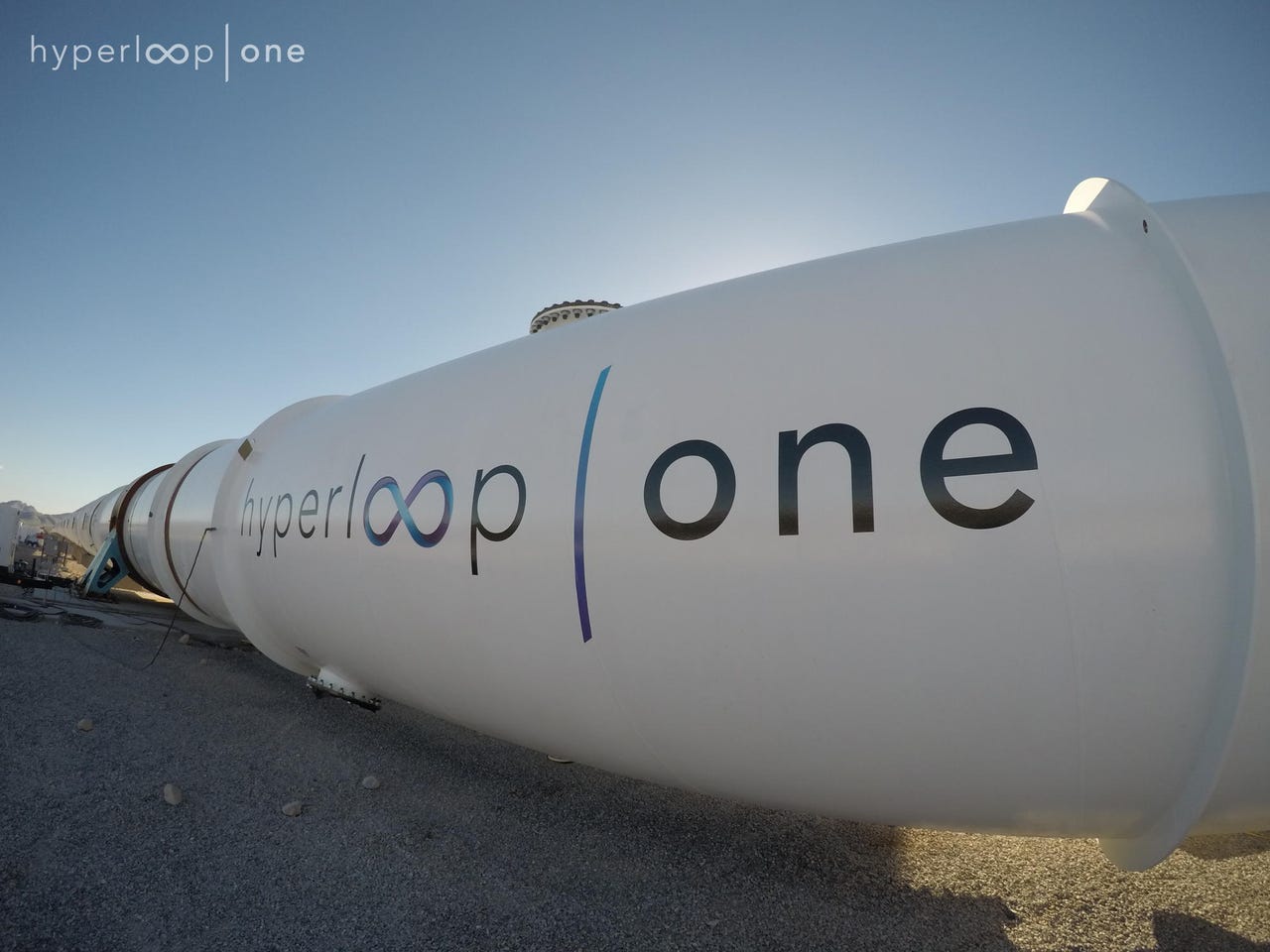Hyperloop One: These nine new routes could bring 680mph maglev travel to millions


Hyperloop One's proposed new routes span 5,000km/3,100 miles and would connect 75 million people in 44 cities.
Hyperloop One has narrowed European submissions for its Hyperloop One Global Challenge down to nine candidate routes.
The potential connections include Germany, Estonia-Finland, Spain-Morocco, Corsica-Sardinia, The Netherlands, Poland, UK Scotland-Wales, UK Northern Arc and UK North-South Connector. News of the routes, spanning 5,000km/3,100 miles and connecting 75 million people in 44 cities, follow its announcement of an 11-route potential network connecting cities in the US.
Hyperloop One announced the 'winners' of the challenge in Amsterdam on Tuesday, talking up the tantalizing prospect of European city-to-city journeys lasting tens of minutes thanks to the Hyperloop's maglev system propelling travelers at 1,100kph/683mph through near-vacuum sealed tubes.
Hyperloop One's pitch is to offer better transport for people living outside major cities and increase the capacity of strategic corridors to create mega-regions in Europe.
Notably, several routes would require undersea tunnels, including a 90km/56-mile Estonia-to-Finland route, and a link between Algeciras and Tangier.
Hyperloop recently said it wasn't ready to deal with tunnels yet, but is very keen on them. The Estonia-Finland route is interesting as it would be an alternative to a recently proposed undersea rail tunnel between Helsinki and Tallinn with an estimated cost of between €9bn and €13bn ($10.1bn and $14.6bn).
The undersea link would cut a nearly two-hour ferry ride down to 30 minutes, but a Hyperloop tunnel would cut the trip to just six minutes.
Estonia's transit sector is cautiously optimistic about the prospect of a Hyperloop tunnel, which is narrower and therefore possibly cheaper than a train tunnel, but also riskier as a new technology.
For Finns, a rail or Hyperloop connection is attractive due to the planned Rail Baltica high-speed train link from Tallinn through Latvia, Ukraine and Poland to Berlin, Germany. Estonians could also gain faster access to Stockholm via a Helsinki-to-Stockholm Hyperloop proposal that was not among yesterday's candidates.
Nonetheless, such a route remains an aspiration for Risto Penttilä, CEO of the Finland Chamber of Commerce, who outlined a vision for a Northern European Hyperloop route through Helsinki, the Baltics, Berlin, Copenhagen, Stockholm, and Oslo.
Hyperloop One's candidate for Germany is a 1,991km/1,237-mile ring passing eight major cities, with stops at Berlin, Leipzig, Nuremberg, Munich, Stuttgart, Frankfurt, Cologne, and Hamburg. The longest connection, a 432km/268-mile tube between Cologne and Hamburg, would take 30 minutes.
The UK's potential Hyperloop route would offer a north-south connector between Edinburgh, Manchester, Birmingham, and London.
Also on the cards are a 428km/266-mile loop in the Netherlands, a 545km/339-mile UK-Northern Arc between Glasgow and Liverpool, and a 629km/391-mile link from Madrid, Spain to Algeciras and across the Strait of Gibraltar to Tangier, Morocco.
Space X boss Elon Musk outlined the potential of Hyperloop travel in a 2013 proposal for a transport system to deliver passengers from Los Angeles to San Francisco in 35 minutes.
Transport pods would carry passengers or vehicles through low-pressure tubes at just under the speed of sound, suspended on air bearings at high speeds, with deployable wheels for low speeds.
More on Hyperloop tech
- Elon Musk's Hyperloop: Can this new test track bring subsonic pod travel closer?
- Hyperloop One settles, cloaks employee harassment lawsuit in secrecy
- Hyperloop One moves step closer to delivering near supersonic speed commutes
- This Hyperloop firm has yet to attempt a test run - but it's already working on the app
- Russia taps Hyperloop for domestic transport
- Elon Musk's Hyperloop hurtles closer: Public demo plus $80m injection
- Elon Musk's Hyperloop: Here's the Dutch team with designs on supersonic train concept